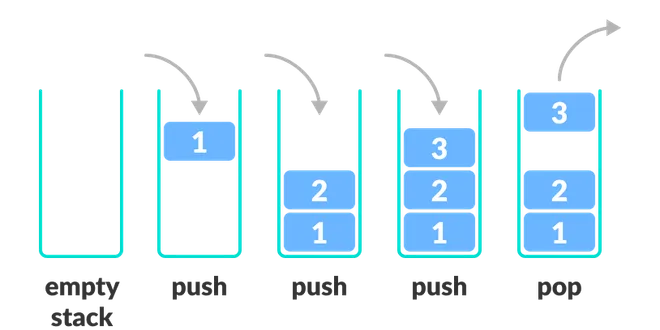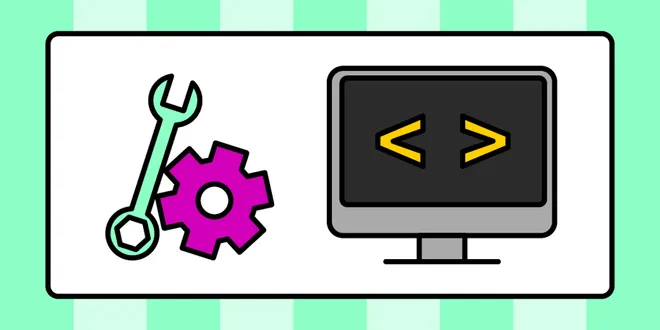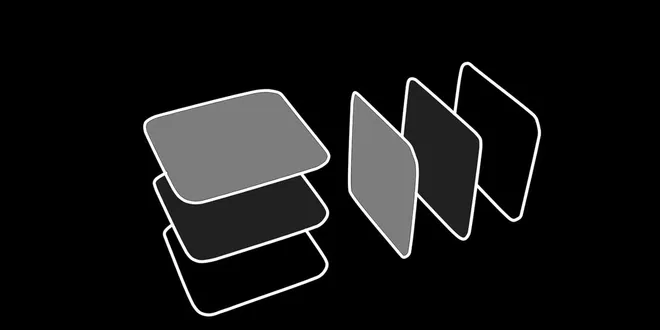Stacks

Stacks
What is a Stack? In Java, Stacks are a LIFO (Last In, First Out) Data structure for objects. Stack API Java contains a Stack API with the following methods Stack() //Creates an empty Stack isEmpty() /...
📚 Read more at Essential Java🔎 Find similar documents

Stacks and queues
Stacks Definition A stack s s s is a data structure that deals with elements s 1 , . . . , s n s_1, ..., s_{n} s 1 , ... , s n in a Last In First Out (LIFO) order. In order to do that, it uses...
📚 Read more at Super Study Guide🔎 Find similar documents

My Journey to Learning Data Structures from Scratch — Stacks
Stacks are literally what the word “stack” means — a Pile of something or something put on top of one another. So, how will you get something that is at the bottom of the pile? You will have to…
📚 Read more at Level Up Coding🔎 Find similar documents

Stack ’Em up With Stacks
One of the most intuitive computer science data structures is a stack. This data structure is widely used in, but not limited to, your compiler, your application memory, and in some of your function…
📚 Read more at Analytics Vidhya🔎 Find similar documents

What are the Differences Between a Stack and a Heap?
A stack is a block of memory in a computer that stores temporary variables created by a function. It’s a type of temporary memory. Variables are declared, stored, and initialized throughout the stack…...
📚 Read more at Python in Plain English🔎 Find similar documents

Implementing a Stack in Javascript
Stacks are one of the fundamental data structures any competent developer should understand. Simple, yet elegant. Stacks serve an essential purpose in Computer Science, ranging from solving complex…
📚 Read more at Level Up Coding🔎 Find similar documents

A brief overview of Stack in Python
A stack is a collection of objects that are inserted and removed according to the Last‐In, First‐Out (LIFO) principle. Refer to the image above and the exact principle to remove objects. We remove…
📚 Read more at Analytics Vidhya🔎 Find similar documents

Stacks Data Structure Overview and Its Implementation in python
Stacks are commonly used data structures that allow us to dynamically store and retrieve data items in one ways. We can use stack in a variety of situations, however the choice depends on the problem…...
📚 Read more at Analytics Vidhya🔎 Find similar documents

Selfmade Stack Class in Java
A stack is a fundamental data structure in programming. It behaves like a data container where new items are added to the top of the stack and you only have access to last one added (most top item)…
📚 Read more at Level Up Coding🔎 Find similar documents

Stack cheatsheet for coding interviews
Introduction A stack is an abstract data type that supports the operations push (insert a new element on the top of the stack) and pop (remove and return the most recently added element, the element...
📚 Read more at Tech Interview Handbook🔎 Find similar documents

Stacks and Queues in Python
Stacks and queues (pronounced kyo͞o or kiu) are simple yet powerful data structures that can help you deal with a variety of situations where some ordered operation or logic is needed and your data…
📚 Read more at Level Up Coding🔎 Find similar documents

Introduction to Stacks
Many of you have seen stone stacks like the one above. If you want to take a stone without breaking the art, you should take the uppermost smallest stone, and to add a stone, you are able to place it ...
📚 Read more at Javarevisited🔎 Find similar documents

